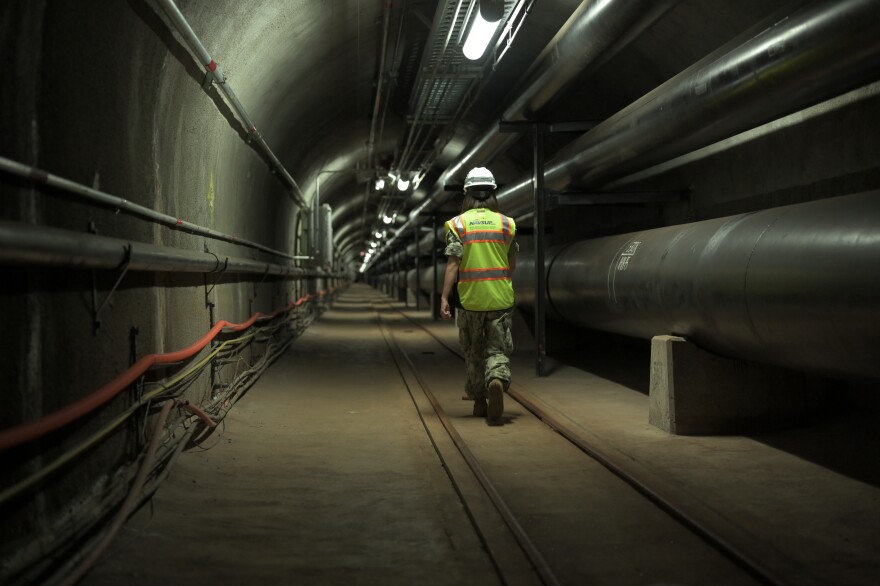Water from the Navy’s Red Hill shaft contains high levels of gasoline and diesel fuel hydrocarbons, the Hawaiʻi Department of Health confirmed, saying the results are consistent with odors detected at the sample sites.
The test results received Thursday night show that hydrocarbons associated with diesel fuel were detected at 350 times the level the health department considers safe. Officials collected the samples on Sunday, Dec. 5.
A California lab found 140,000 parts per billion of total petroleum hydrocarbons as diesel, or TPH-d. The DOH Environmental Action Level is 400 ppb.
The water in the Red Hill shaft also showed gasoline hydrocarbons 66 times higher than the level considered safe. The lab found total petroleum hydrocarbons as gasoline at 20,000 ppb. The EAL for TPH-g is 300 ppb.
Trace levels of petroleum were also detected in water samples taken from the Aliamanu Child Development Center and some housing units on the Navy’s distribution system.
Navy officials said during a legislative briefing Friday, "with a high degree of confidence," that the cause of the contaminated water was a leak of 14,000 gallons of fuel and water around Nov. 20 at a fire suppression system near Red Hill, Hawaii News Now reports.
The Navy said on Nov. 22, "There are no signs or indication of any releases to the environment, and the drinking water remains safe to drink."
Meanwhile, the Navy and the Department of Health released what appeared to be conflicting information about petroleum detected in a second Navy water shaft, the ʻAiea-Halawa Shaft.
The DOH reported Wednesday that Navy tests detected diesel fuel levels more than double the limit for drinking water. The Navy backtracked later, saying the sample "did not come directly from the Navy’s Aiea-Halawa Well and the Navy does not believe it indicates contamination of the Navy’s Aiea Halawa Well."
Those water samples found petroleum hydrocarbons diesel range organics at a level of 920 ppb. Again, the environmental action level for TPH-d is 400 ppb.
The Department of Health continues to recommend that residents on the Navy’s system avoid drinking, cooking, or using the water for oral hygiene. Those who detect a fuel odor should also avoid using the water for bathing, dishwashing, and doing laundry.
As a precaution, the Honolulu Board of Water Supply has shut down two wells, in addition to the Halawa Shaft shut down last week.
The Navy’s ʻAiea-Halawa Shaft and the Honolulu Board of Water Supply’s Halawa Shaft are different water distribution systems, located 1.5 miles apart.
"We're taking the precautionary measures, shutting our wells down that pump from the same aquifer because, folks, we cannot afford to repeat what the Navy's customers are experiencing right now," Honolulu Board of Water Supply Manager and Chief Engineer Ernest "Ernie" Lau said.
The BWS said it has received verbal confirmation that the water from its Halawa shaft is not contaminated by petroleum.
Lau has asked Central Oʻahu and Honolulu residents to use water wisely.
Read the lab results from the Red Hill shaft or click here to open a new tab.






